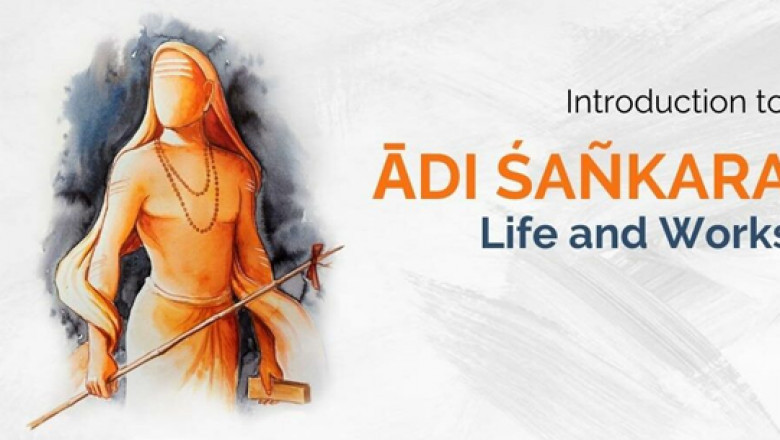views

Jagadguru Ᾱdi Śañkara is one of the greatest minds witnessed by Bhārata-varṣa and the world. It’s a mind that combines logic and rationality, mysticism, spirituality, and devotion cohesively to bring out the true essence and purport of our shastras. The contributions of the Ᾱcārya in the revival of the Upanishadic teachings and other aspects of Sanātana Dharma are unparalleled. However, as seen in most cases, these contributions are sometimes exaggerated, stemming from an extreme attachment to the Ᾱcārya and sometimes underplayed to make someone else or something else greater.
Introduction to Ᾱdi Śañkara Life and works- The Course
This Indica Course aims to create awareness about the life, times and contributions (including some of the key works) of Jagadguru Ᾱdi Śañkara through various textual, historical, traditional and archaeological references.
In this course, an attempt will be made to see things as they were to the extent possible based on available information, which itself is awe-inspiring for all followers of Sanātana Dharma.
Objectives of the course
- To study and reflect on the life and times of the Ᾱcārya based on his biographies and any other textual, historical, traditional and archaeological information available.
- To study and reflect on the works of the Ᾱcārya to understand better his thinking and the message he wanted to convey.
- To study and reflect on the contributions of the Ᾱcārya (beyond his works) based on the available textual, historical and traditional references.
Expected Outcomes of the course
Through this course, the participants will get a more informed and detailed understanding of the life and works of Ᾱdi Śañkara and hence appreciation of the contribution of the Ᾱcārya to Sanātana Dharma.
Syllabus of the course
- The context – This includes the basic details on Vedas, Vedānta, Buddhism and its rise, impact on Vedic tradition
- Detailed information about the birth of Śañkara and his life at Kalady (incl. Kanakadhara-stavam)
- Journey to meet the Guru (incl. Nirvana-Shatkam) and life on the banks of Narmada
- Arriving at Kashi (incl. Bhaja-Govindam), Sanandana joins, Journey to Badri
- Prasthāna-Traya-Bhāṣya (1/3)
- Prasthāna-Traya-Bhāṣya (2/3)
- Prasthāna-Traya-Bhāṣya (3/3)
- Meeting with Vyasa, Coming to Prayaga, Meeting with Kumarila bhatta
- Meeting with Mandana & the debate (1/2)
- Meeting with Mandana & the debate (2/2
- Moving to Sri Sailam (incl. Sivanandanlahari, Yoga taravali), Meeting with Kapalika, Narasimha-avesha in Padmapada
- Travel to Dakshina Karnataka, Coming of Hastamalaka, Establishing the Sringeri Pitha
- Coming to Kalady, Travel across Dravida desha (incl. Kanchi Kamakoti Peetam) (Digvijaya) – 1 /3
- Travel across various other regions (incl. Puri Jagannath) (Digvijaya) – 2/3
- Travel across various other regions (incl. Sarvajna peetha in Kashmir) (Digvijaya) – 3/3; Coming to Kedar and disappearance
The faculty - Subramanian C
Subramanian C (commonly referred to as Subbu) hails from a family of Samavedic scholars in the Puthucode village of Palakkad district (Kerala).
He is an electrical engineer by qualification and a postgraduate in management from IIM Lucknow. He has 13+ years of experience in management consulting & industry and is currently working as Director of Strategy for a leading MNC in India.
He has published operations & strategy case studies/ articles in leading national and international management journals and delivered lectures at IIM Lucknow (Noida), IIM Indore and VJTI (Mumbai).
He is an M.A. in Sanskrit (Specialization in Vedanta) and a diploma in Manuscriptology, both from Mumbai. He has also been a visiting faculty of Vedanta, Itihasa, Puranas and Bhakti. He has formally studied Veda chanting for eight years. He is currently pursuing his doctoral studies on ‘Indic perspectives for modern leadership’ from Chinmaya Vishwavidyapeeth. He has several papers and articles published in various national and international journals and presentations at various conferences & seminars.












Comments
0 comment